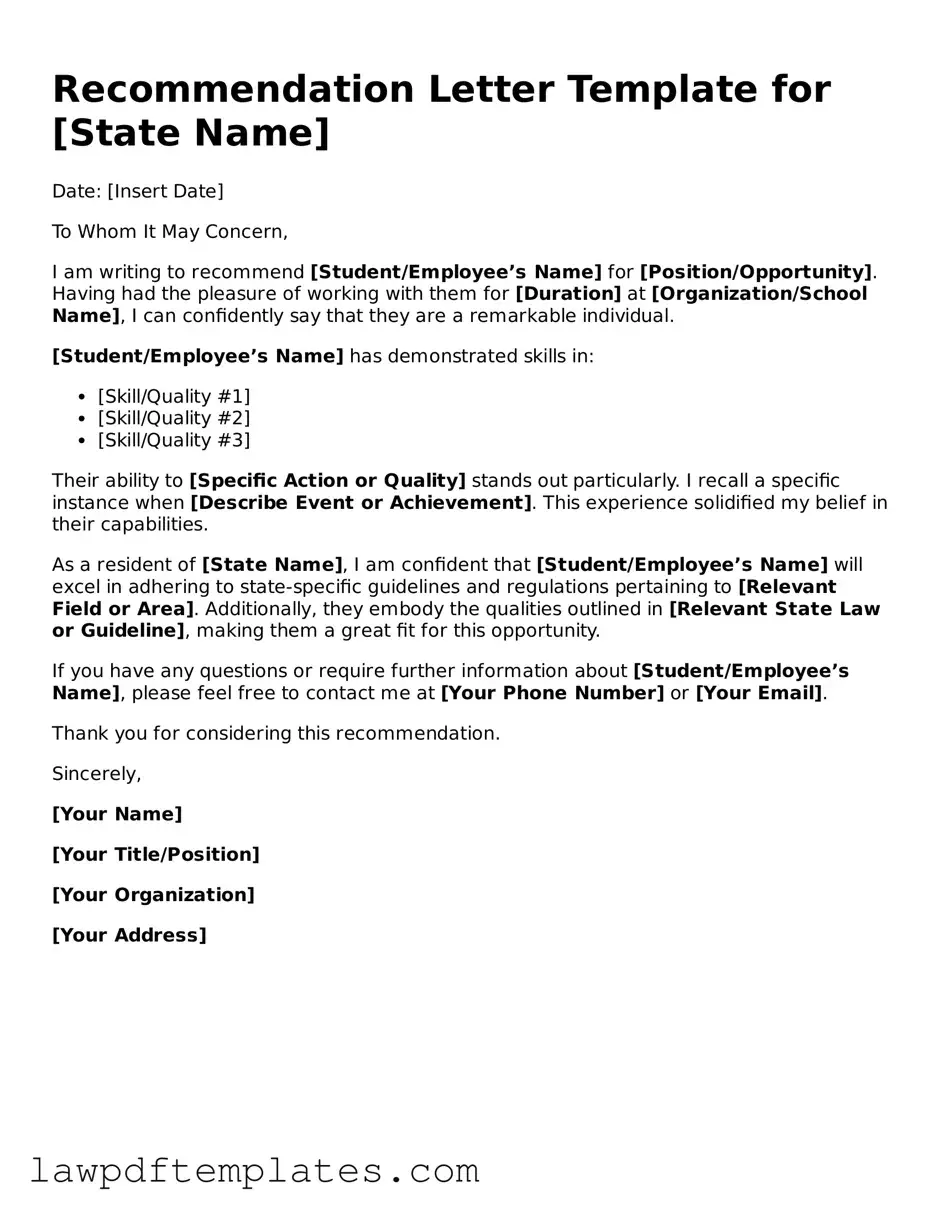Recommendation Letter Template for [State Name]
Date: [Insert Date]
To Whom It May Concern,
I am writing to recommend [Student/Employee’s Name] for [Position/Opportunity]. Having had the pleasure of working with them for [Duration] at [Organization/School Name], I can confidently say that they are a remarkable individual.
[Student/Employee’s Name] has demonstrated skills in:
- [Skill/Quality #1]
- [Skill/Quality #2]
- [Skill/Quality #3]
Their ability to [Specific Action or Quality] stands out particularly. I recall a specific instance when [Describe Event or Achievement]. This experience solidified my belief in their capabilities.
As a resident of [State Name], I am confident that [Student/Employee’s Name] will excel in adhering to state-specific guidelines and regulations pertaining to [Relevant Field or Area]. Additionally, they embody the qualities outlined in [Relevant State Law or Guideline], making them a great fit for this opportunity.
If you have any questions or require further information about [Student/Employee’s Name], please feel free to contact me at [Your Phone Number] or [Your Email].
Thank you for considering this recommendation.
Sincerely,
[Your Name]
[Your Title/Position]
[Your Organization]
[Your Address]
